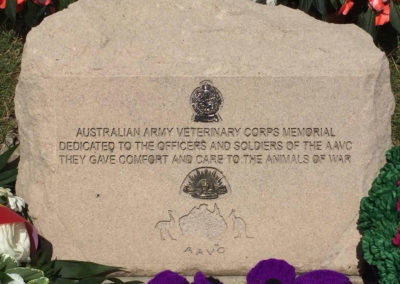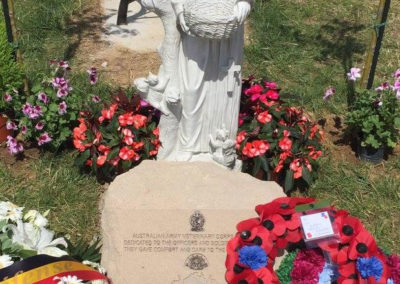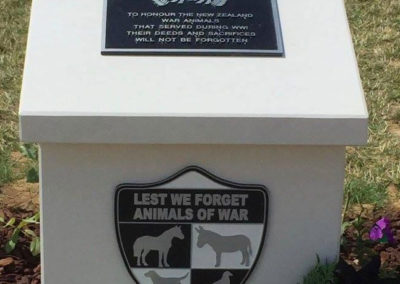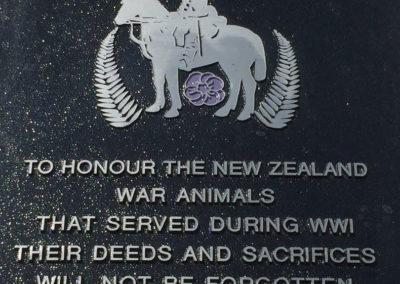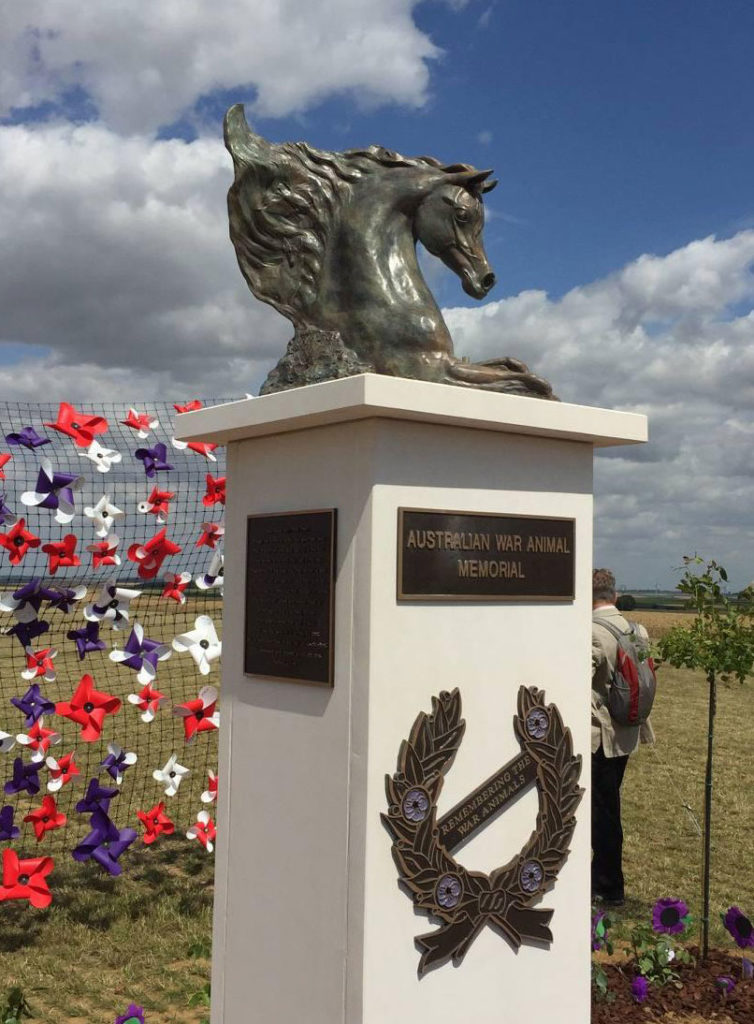
WW I Animal War Memorial
Pozieres, France
Being the Centenary of the “The Great War” it is a distinct honor to be the sculptor of this historic and First War Animals Monument for WWI on the Western Front.
Thank you to Nigel Allsopp and all at AWAMO (Australian War Animals Memorial Organisations) for the honor of creating the Bronze Horse Memorial “Emerging Spirits” for Australia and the Bronze Dog Memorial, “Faithful Partner” for all the other animals of war from all sides in WWI, located in Pozieres, France, in the Somme Valley. In the mane of the horse I sculpted spirit images of a Red Cross dog, mule, pigeon and donkey representing all animals who served. The dog’s tag reads, “Our Spirits Live On”. Sadly, 9 million war animals died on the Western Front in WWI. It is an important and stunning memorial site that AWAMO put together on such a sacred battlefield. Sadly, 23,000 Australian soldiers were lost in The Battle of the Somme. The ceremony was very moving and truly beyond my imagination. Now and for generations to come, the world will be better able to understand and honor the brave soldiers and animals who served and sacrificed so greatly.
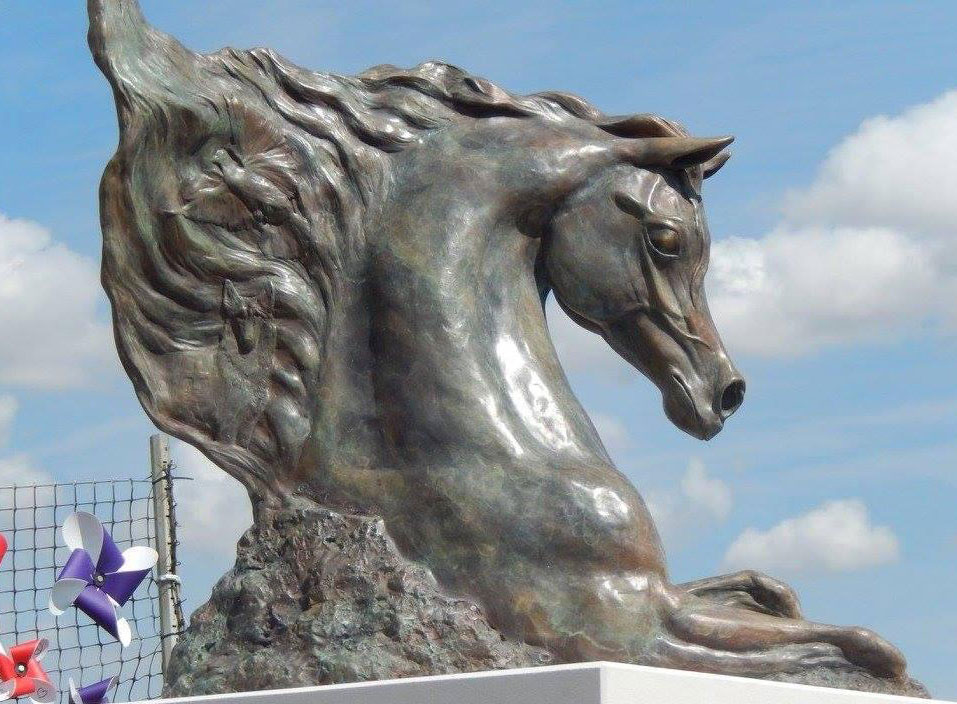
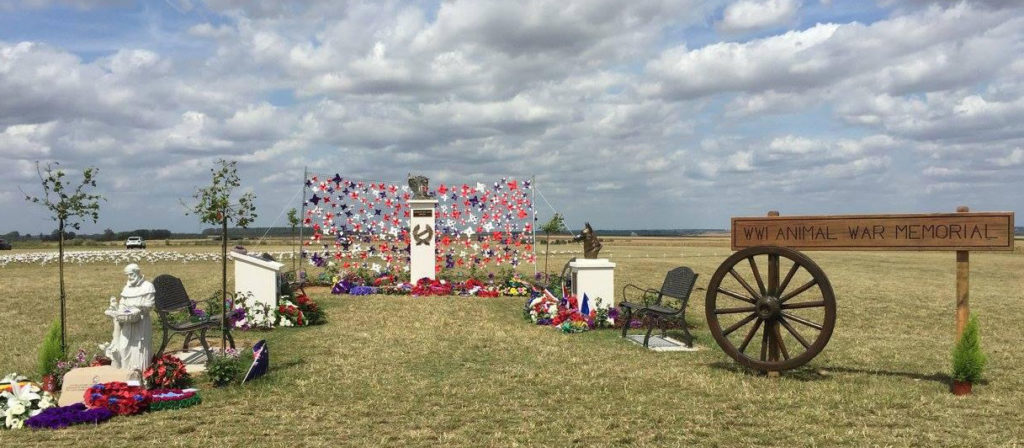
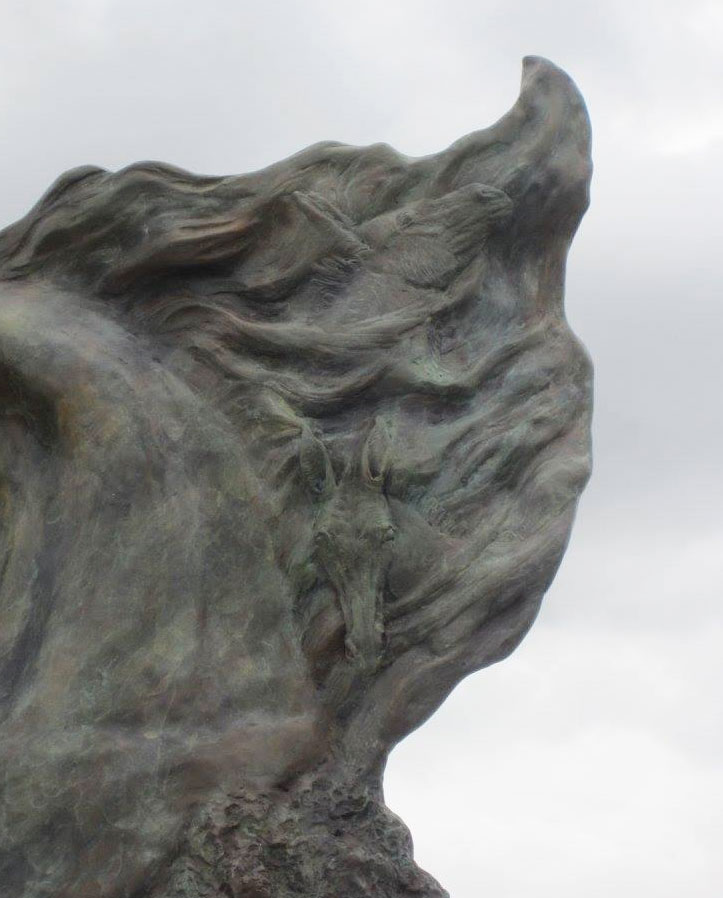

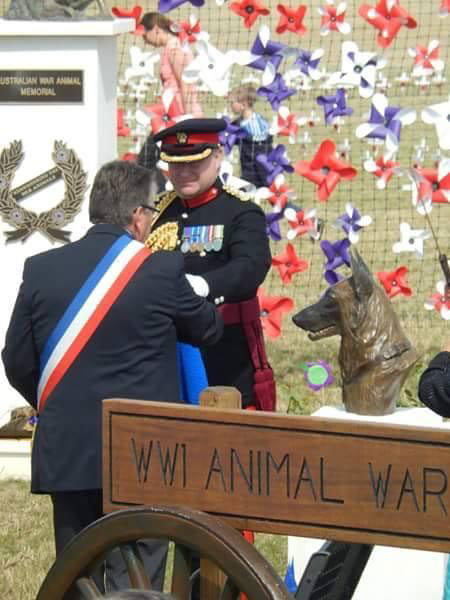

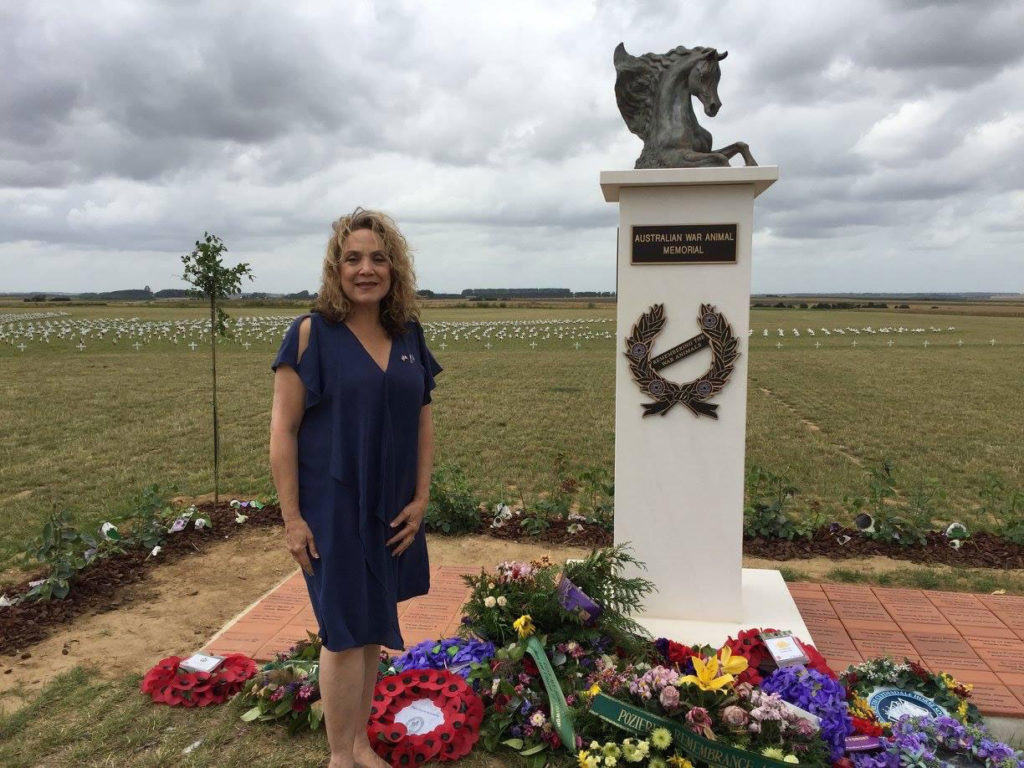
Susan Bahary with her sculpture Emerging Spirits. Pozieres, France

Millions of horses also made the ultimate sacrifice and where invaluable to the war effort as were donkeys and mules. In addition, they provided comfort to the soldiers on the battlefield as there was a great bond between them.
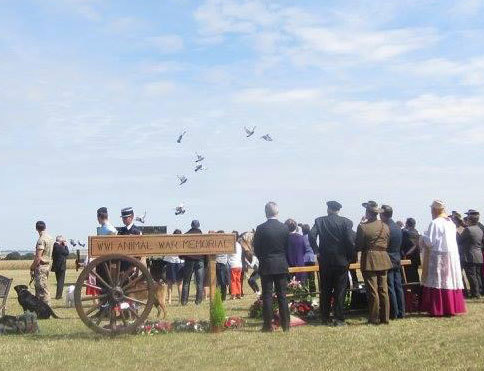
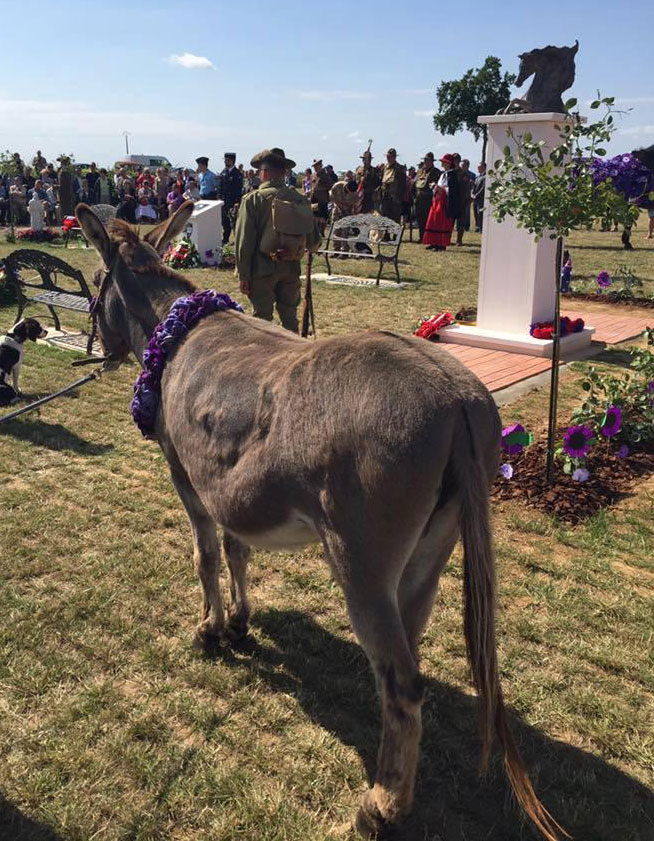
From a sweet donkey’s point of view during the very touching ceremony. Several horses, countless pigeons and many German working dog handlers and their service dogs of many breeds were also in attendance.

I kneeled next to this beautiful dog to take a picture with him and he gave me his paw! The animal/human bond is timeless and has no borders!
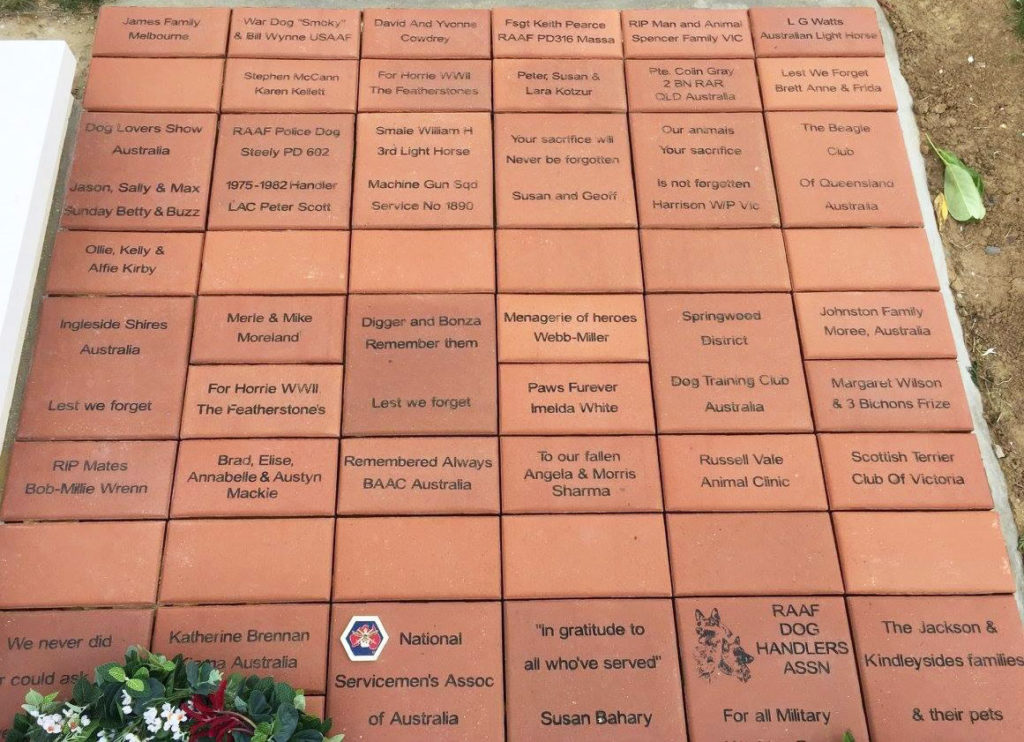
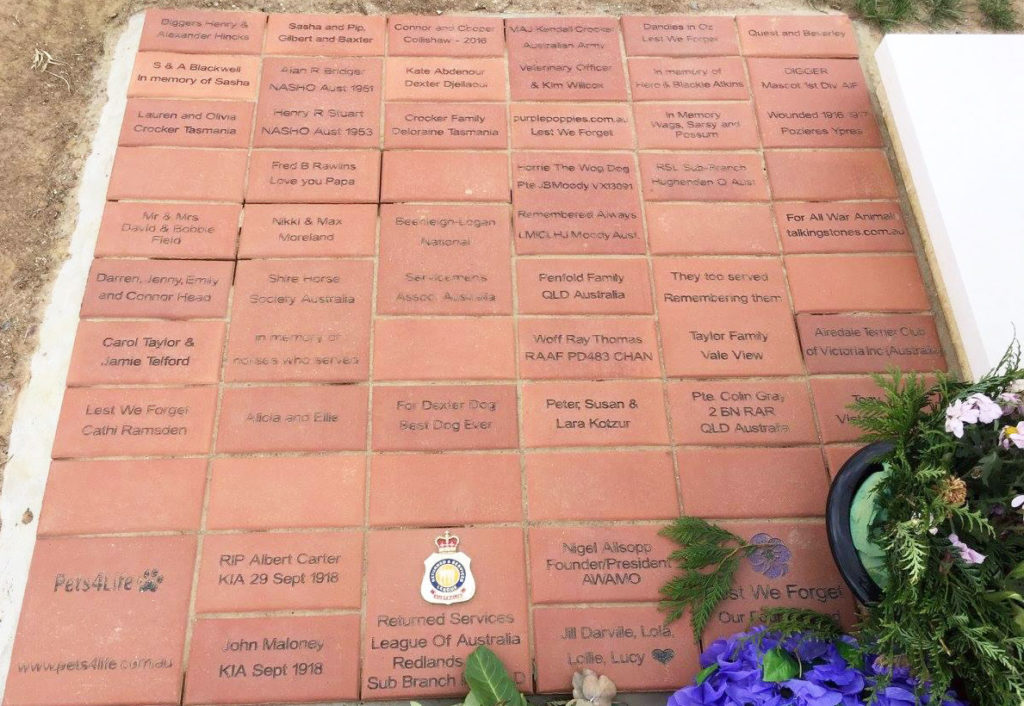
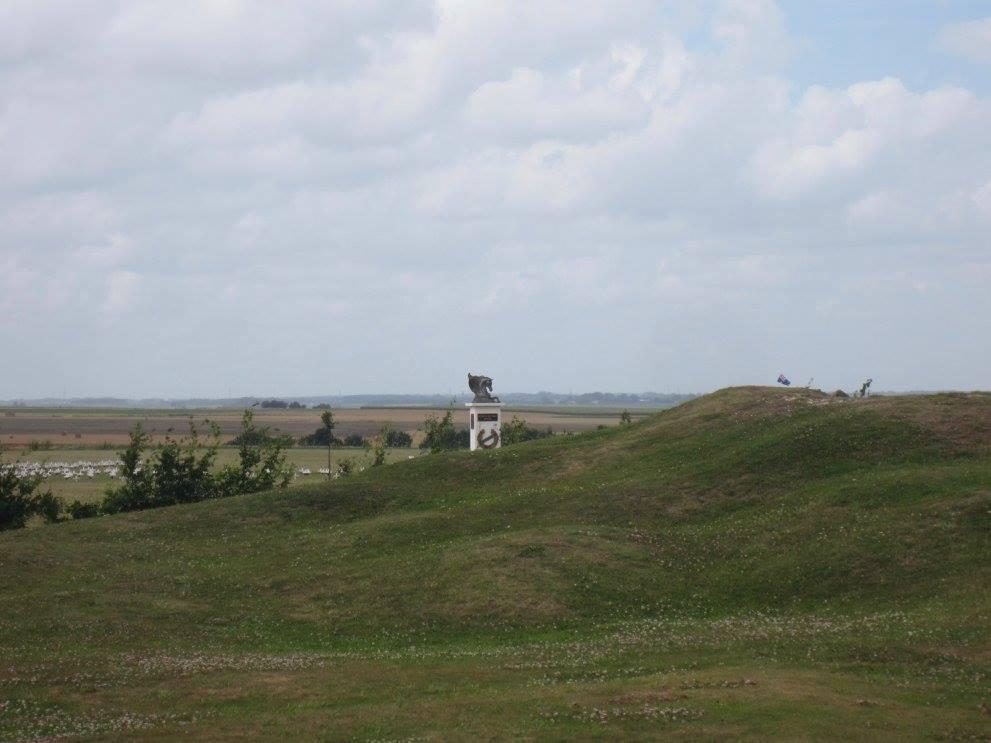
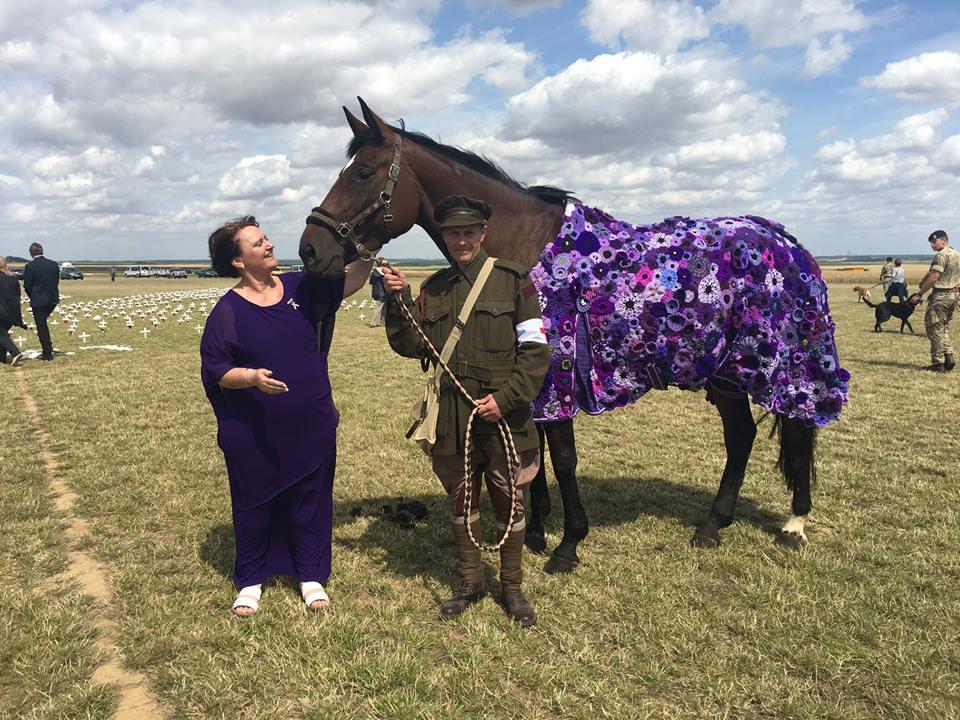
Purple Poppy®, bringing the official international symbol of service animals to the U.S. For more information please visit:
National Service Animals Monument
All the beautiful knitted purple poppies you see on this blanket were knitted by people throughout Australia to honor the soldiers and animals of WWI. Wendy along with some help sewed them all together on this blanket that was worn by a horse at the ceremony and will be kept in a special museum in Australia.
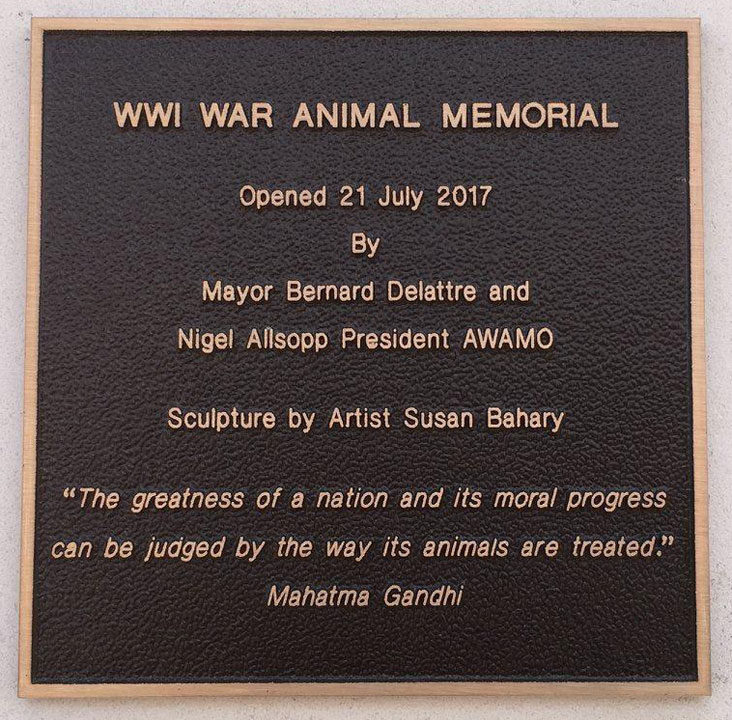

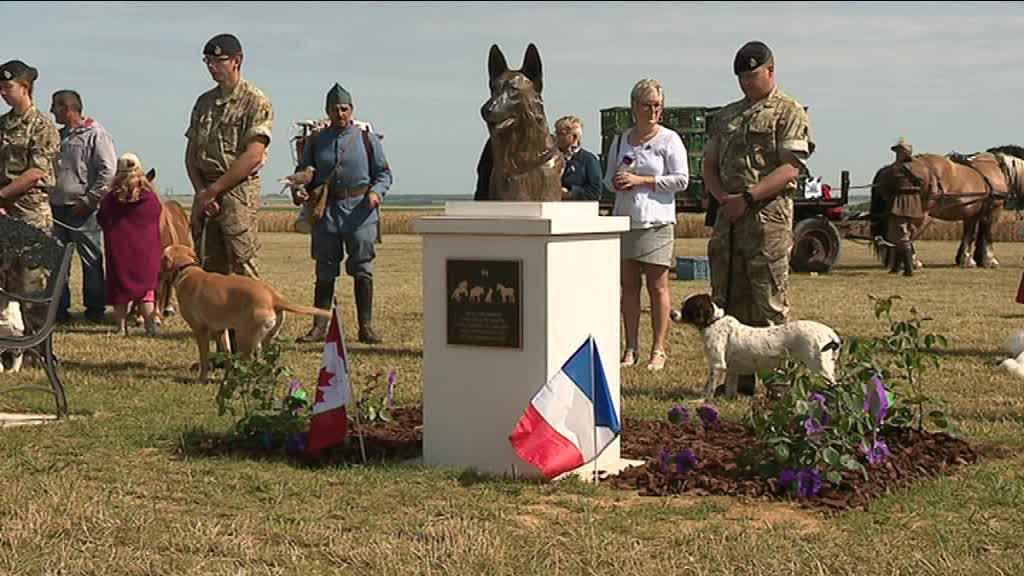
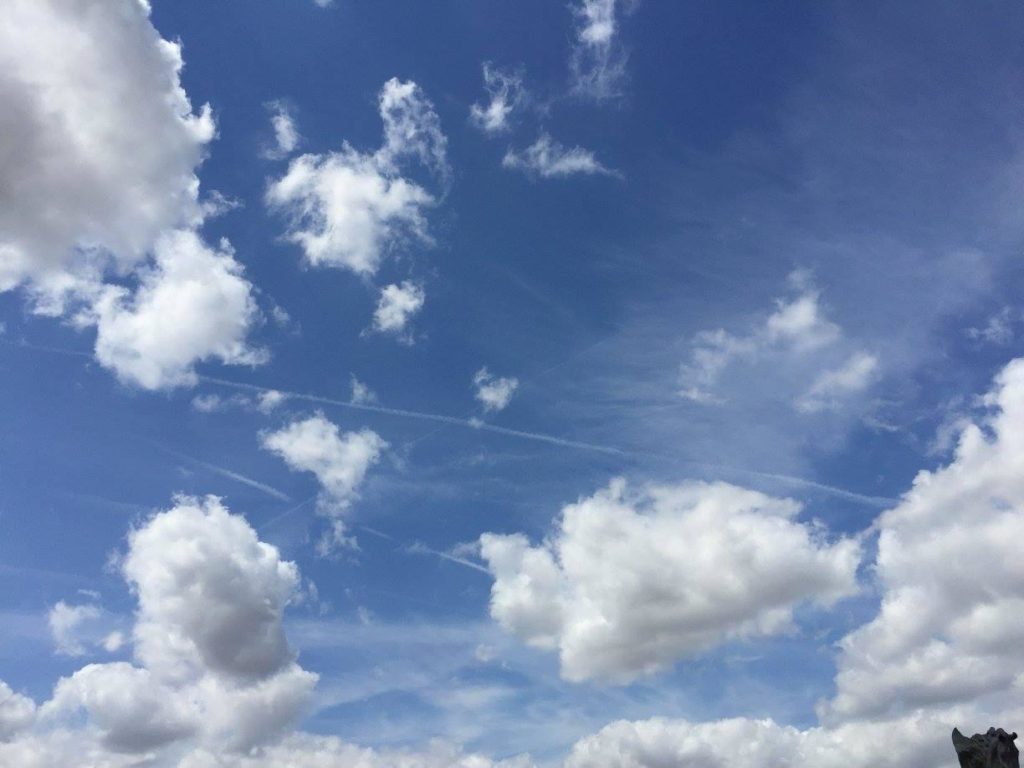
Before Nigel Allsopp spoke at the ceremony this is the letter” A”, that was unintentionally formed by three airplanes. Nigel was very moved by this. Many of us noticed it and first thought it was purposely being done as a V for Victory. Then a third plane crossed it making it an “A”.
Nigel felt it was perhaps a sign that we were all doing the right thing that day. For him the letter “A” stood Australia, Animals and for his great uncle by the last name, Allsopp, who died on that very same battlefield a century ago trying to save a mule and donkey team.


